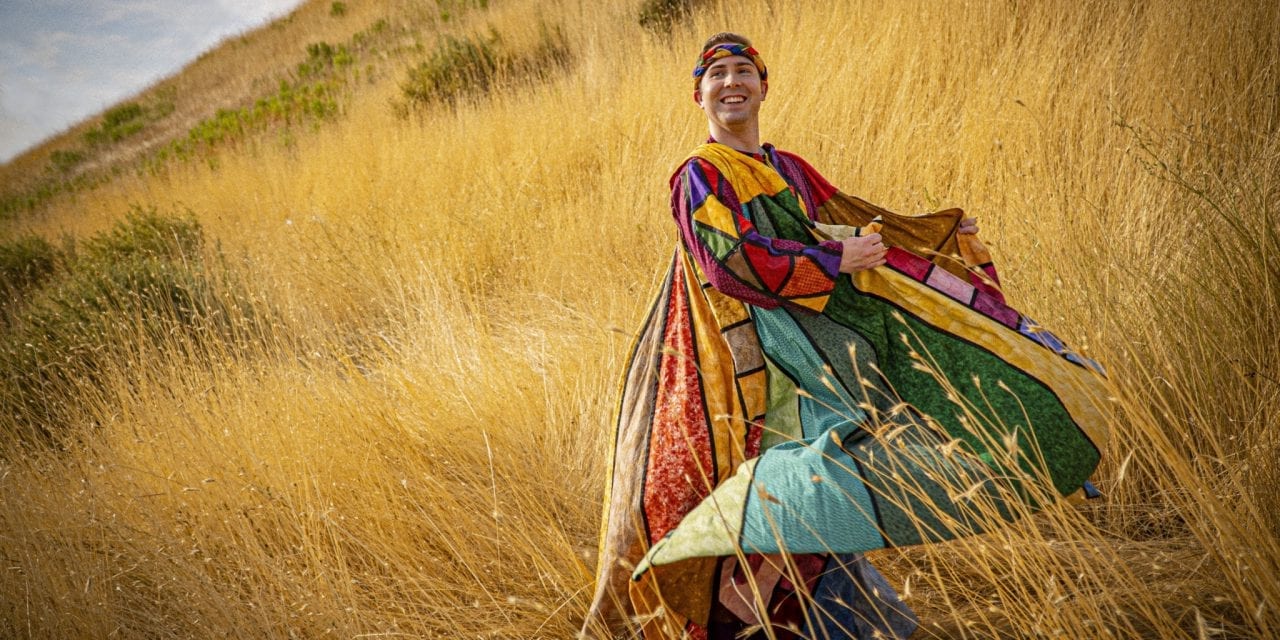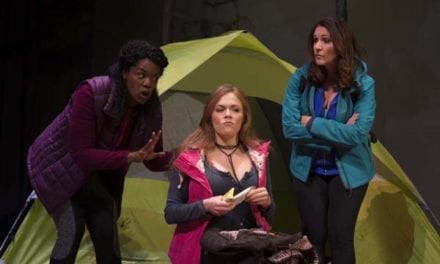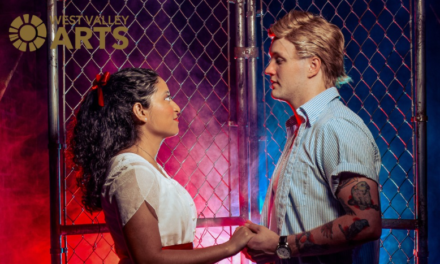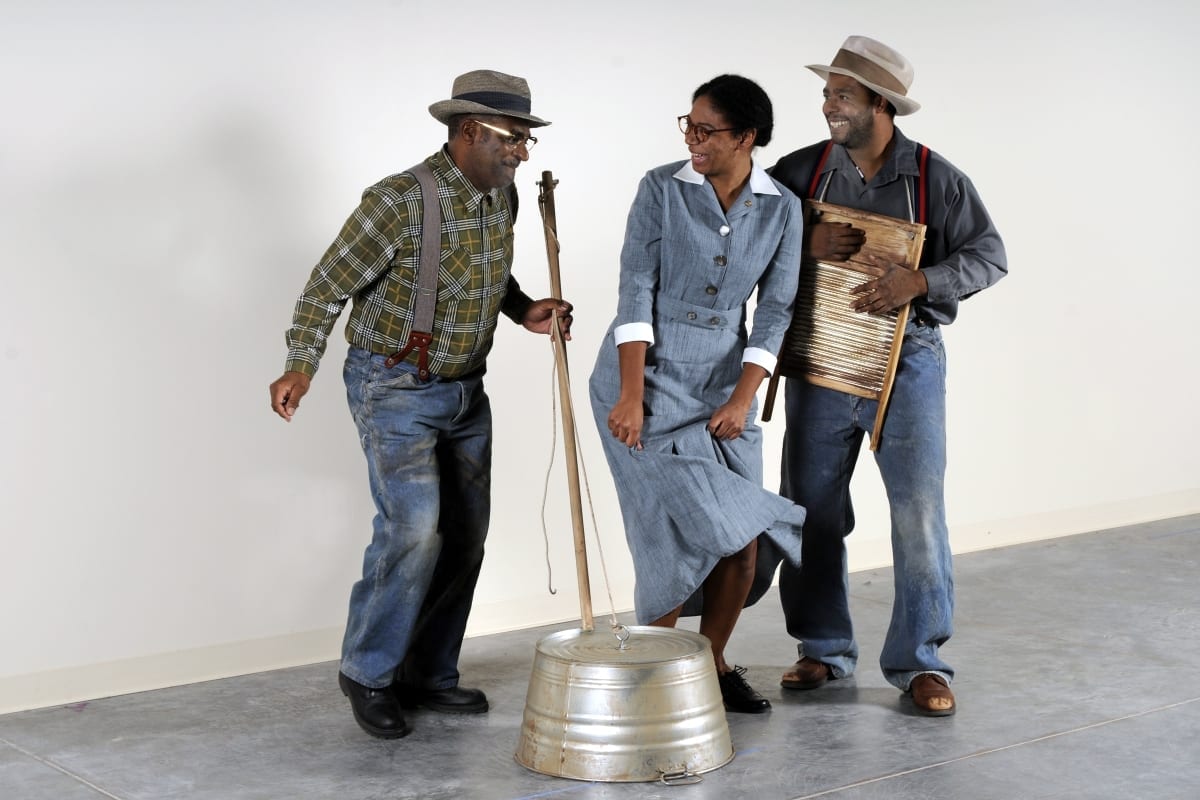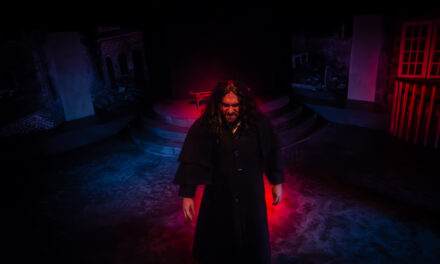OREM — In the comfort of the SCERA, it is easy to get lost in the magic of Joseph and the Amazing Technicolor Dreamcoat. With music by Andrew Lloyd Webber and lyrics by Tim Rice respectively, this show is unlike the typical musical in that it doesn’t call for just a few talented leads, but requires every single ensemble member to be energetic and talented.

Show closes October 5, 2019.
There is one question though: how do you write over 24 individual reviews for the brothers, their wives and the youth choir who all had an equally important role in this production? Unfortunately, that’s not very realistic. Even though everyone had their time to shine, I can only include so much before I give the whole show away.
First, I will start with the husband and wife duo: Kathryn Laycock Little and Howard Little, co-directors. Although Joseph and the Amazing Technicolor Dreamcoat is probably the most frequently produced play in Utah, the Littles did well at keeping the action surprising and giving the production their own flair. An example of this was occurred in Potiphar’s wife scene during Act I. The Narrator was singing about the temptress when the music cut off with a record scratch sound effect. The Narrator quickly joked about the content and ushered the children off stage, while a little boy lingered to stare at the beautiful actress. This was a great (unscripted) addition to add humor while also keeping this production fresh.
The Littles also did a remarkable job on their use of space and the levels of the set throughout the night. The actors were frequently moving about the platforms, even interacting in the apron in front of the stage. This use of the full space and the platform was a dynamic use of height that kept the staging unique.
The lighting designer (Elizabeth Griffiths) and costume designer (Deborah Bowman) added to the spectacle with their creative contribution. Griffiths played around with colors during the song “Joseph’s Coat,” having different colors flash across the upstage scrim while the ensemble members chanted the specific colors of the amazing technicolor dreamcoat. When the chanting became more intense and rapid, the screen had an infinite rainbow glide across the backdrop. This made the song more magical and brought the colorful world to life.
Bowman also had a challenge in front of her: not only were there 12 different brothers that had separate color palettes, but she also had to design a Caribbean party, a western, a 1950s Elvis look, and a French café. All of the designs felt natural and never brought any discord across the different eras. For example, during the transition from “Close Every Door” to “Go Go Go Joseph,” the dancers threw off dark grey cloaks revealing psychedelic disco pants and flowy tops to assist the 1960s themed song.
My only suggestion to improve the technical aspects of this production would be to control the background microphones better to help the audience hear the main vocals, which lead the story along. Some songs had an overflow of background vocals drowning out the soloist, leaving the audience to guess what was said.

Mitchell Boberg as Joseph. Photo by Rachel Gibson.
A quick mention goes to choreographer Brodee Ripple who kept the dance moves fresh and upbeat. Even though there were roughly 30 people on stage, it never felt crowded. The songs in the score are drastically different from each other in style, but Ripple rose to the challenge with brilliant choreography that flowed seamlessly throughout the show. Each swing dance, kickline, and John Travolta dance move was fun, energetic, and exciting to watch.
Hannah Tessen, who played Potiphar’s wife and the A’Pache Dancer, is a phenomenal actress that stood out throughout the production. Her ability to play a seducing (and rather wayward) Egyptian wife with grace was surprising and appreciated. Being an elegant dancer, twirling and leaping across the stage, she approached both her roles with maturity instead of making them feel tacky. This came from her agility to do flips around her room, have a cat-and-mouse scene with Joseph, and even attempting a snake-charmer dance all with a straight face. You could tell she was having fun while her snake eyes also wanted her prey.
One of the brothers that impressed me was Issachar, played by TJ Thomas. He was the soloist for the song “Canaan Days” in the second act. This French-style song requires not only a French accent, but someone who can be humorous while singing about starving during a famine. Thomas excelled with his accent, overdramatizing every consonant and frequently causing the audience to laugh. Every facial expression matched the words of the song, dancing around when singing about their past “extravagant, elegant, soirées.” I truly believed that they had gone from riches to rags and felt sorry that the brothers had lost Joseph.
The eldest brother, Rueben (played by Bronson Dameron), is a natural leader of the group, which was apparent during “One More Angel In Heaven.” Dameron shuffled on the stage playing a harmonica for the Western-inspired song with his incredible stage presence and fun facial expressions made this song one of my favorites of the night. During the tempo change, Dameron was able to change his seemingly mournful, preacher-style demeanor and facial expressions immediately into a joyous cowboy. It was so fun to watch his acting be genuinely fake—real enough to fool the father, but fake enough for the audience to understand his joy.
Joseph (played by Mitchell Boberg) was the clean cut, boy-next-door, and Broberg owned it. Boberg acted as if everything he was experiencing around him was happening for the first time. He was astonished when his brothers put him in a well, was sorrowful when sent to jail, and terrified by Potiphar’s wife. The wonder in every scene strengthened the show so much. When he entered while riding a golden chariot, his face gleamed like a little boy who just got his first bike. In the last scene, when Joseph sang a reprise of “Any Dream Will Do” to his father, Boberg’s voice became emotional while tears filled his eyes, bringing genuine feeling that love has no bounds or time limits. I loved watching this portrayal of Joseph.
One actress that needs mentioning is Alyssa Baumgarten, who played the Narrator, who serves as the gateway between us and Joseph’s story. Baumgarten was able to be sassy and real, even to the extent that she took a bucket of popcorn and a drink into the audience to watch the Western scenes. My occasional glance down the rows would show Baumgarten sharing popcorn all around and interacting with the audience members.
Baumgarten’s talents were also highlighted through the power she gave to the Narrator’s songs. Most of the songs go through quick-paced beats and then end in a long note, which Baumgarten handled with poise. Her voice control is remarkable and her moment to shine was during the first scene in the second act. “Pharaoh’s Story” provided her a chance to belt out her lyrics and showcase her talent. By far, this was the best interpretation of the Narrator I have seen.
The energy this talented cast brought to the show was worth every second. It is easy to see they’re having fun and enjoy being up on the stage. There is no reason to miss this production of Joseph and the Amazing Technicolor Dreamcoat.

This review was supported by a generous grant from the Orem CARE program.

